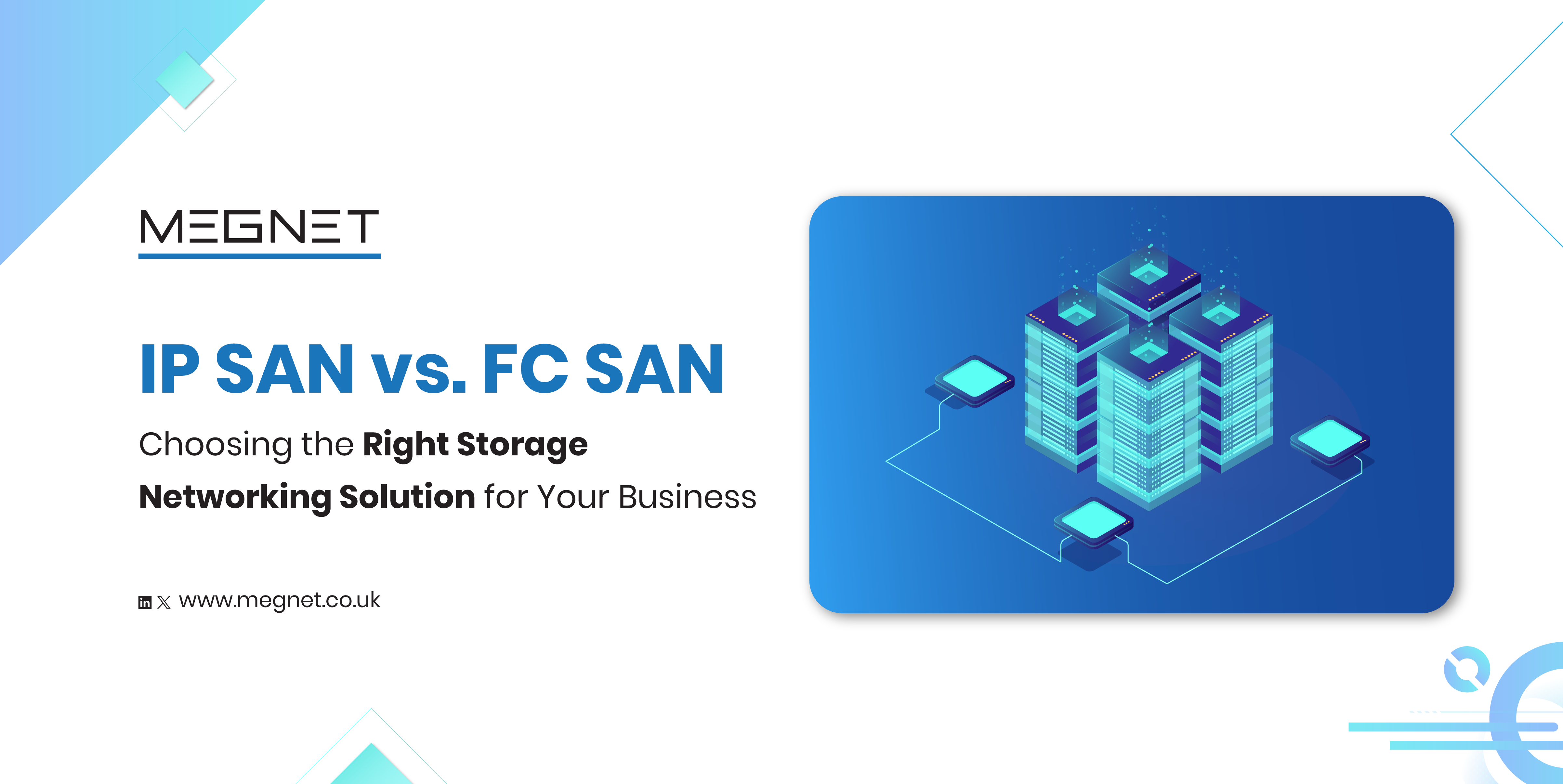
Choosing the Right Storage Networking Solution for Your Business
In today’s fast-paced digital environment, businesses are constantly seeking efficient, scalable, and cost-effective storage solutions. Two prominent technologies in the realm of storage networking are Internet Protocol Storage Area Network (IP SAN) and Fibre Channel Storage Area Network (FC SAN). Both have distinct advantages and cater to different business needs. This blog will delve into a comprehensive comparison between IP SAN and FC SAN, helping businesses determine which solution aligns best with their operational requirements. Additionally, we will explore the relevance of these technologies in the context of Cloud Data Centre VXLAN and the trend towards all-electric data centres.
Understanding IP SAN Storage Networking
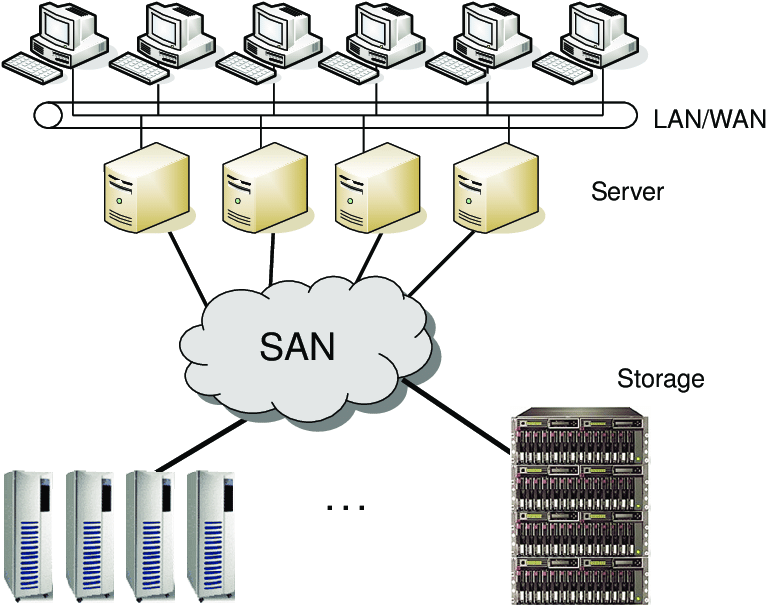
What is IP SAN?
IP SAN, or Internet Protocol Storage Area Network, leverages standard IP networks to connect storage devices. It uses the iSCSI (Internet Small Computer Systems Interface) protocol to facilitate communication between servers and storage devices over an IP network. IP SANs are known for their flexibility and cost-effectiveness, making them a popular choice for businesses looking to scale their storage infrastructure without significant upfront investments.
Key Benefits of IP SAN
- Cost-Effectiveness: IP SAN utilizes existing IP networks, reducing the need for specialized hardware and lowering overall costs.
- Scalability: Easily scalable by adding more storage devices or expanding the network.
- Flexibility: Compatible with a wide range of devices and can be implemented over long distances.
- Simplified Management: Utilizes familiar IP-based tools and protocols, simplifying management and maintenance.
Understanding FC SAN
What is FC SAN?
FC SAN, or Fibre Channel Storage Area Network, employs Fibre Channel protocol over high-speed fibre optic cables to connect servers and storage devices. Known for its high performance and reliability, FC SAN is a preferred choice for enterprises requiring robust storage solutions with minimal latency and high data throughput.
Key Benefits of FC SAN
High Performance: Provides low-latency and high-bandwidth connectivity, ideal for performance-intensive applications.
- Reliability: Offers enhanced reliability and data integrity, crucial for mission-critical environments.
- Security: Fibre Channel networks are inherently secure, providing better isolation and data protection.
- Dedicated Infrastructure: Ensures consistent performance as the network is dedicated solely to storage traffic.
Comparing IP SAN and FC SAN
Performance
- IP SAN: Generally offers good performance for most business applications. However, it may face latency issues in high-demand environments due to network congestion and the inherent characteristics of IP-based protocols.
- FC SAN: Known for exceptional performance with low latency and high data transfer rates, making it suitable for applications requiring real-time data access and high throughput.
Cost
- IP SAN: More cost-effective as it leverages existing IP networks and does not require specialized hardware. Ideal for small to medium-sized businesses looking to optimize their budget.
- FC SAN: Higher initial costs due to the need for dedicated hardware and infrastructure. Typically chosen by large enterprises that prioritize performance and reliability over cost.
Scalability
- IP SAN: Highly scalable, allowing businesses to expand storage capacity by adding more devices or upgrading network infrastructure. Suitable for growing businesses with evolving storage needs.
- FC SAN: Also scalable, but expansion can be more complex and costly due to the specialized nature of the hardware and infrastructure.
Management and Maintenance
- IP SAN: Easier to manage using standard IP-based tools and protocols. Familiarity with IP networking can simplify administration and troubleshooting.
- FC SAN: Requires specialized knowledge and tools for management. Maintenance can be more complex and may necessitate dedicated IT staff with expertise in Fibre Channel technology.
Security
- IP SAN: Security largely depends on the underlying IP network. Additional measures such as encryption and network segmentation are often required to ensure data protection.
- FC SAN: Offers inherent security advantages due to the isolated nature of Fibre Channel networks, reducing the risk of unauthorized access and data breaches.
Relevance to Cloud Data Centre VXLAN
What is VXLAN?
VXLAN (Virtual Extensible LAN) is a network virtualization technology that enables the creation of virtual networks across physical network infrastructure. It addresses the scalability limitations of traditional VLANs by using a 24-bit segment ID, allowing for up to 16 million unique network identifiers.
Integration with IP SAN and FC SAN
IP SAN and VXLAN
IP SAN can seamlessly integrate with VXLAN, providing flexible and scalable storage solutions for cloud data centres. The use of standard IP protocols allows IP SAN to operate effectively within virtualized environments, enabling efficient data movement and storage management across geographically dispersed data centres.
FC SAN and VXLAN
While FC SAN typically operates on a dedicated Fibre Channel network, it can be integrated into VXLAN environments through gateway devices that connect Fibre Channel and Ethernet networks. This allows businesses to leverage the performance benefits of FC SAN while maintaining the scalability and flexibility offered by VXLAN.
Moving Towards All-Electric Data Centres
All-electric data centres represent a shift towards more sustainable and energy-efficient IT infrastructure. By relying solely on electrical energy and minimizing the use of fossil fuels, these data centres aim to reduce their carbon footprint and operational costs.
Role of IP SAN and FC SAN in All-Electric Data Centres
IP SAN
IP SAN’s compatibility with existing IP networks and its ability to leverage energy-efficient Ethernet technologies make it a suitable choice for all-electric data centres. By optimizing network infrastructure and implementing energy-efficient practices, businesses can enhance the sustainability of their storage solutions.
FC SAN
FC SAN can also contribute to the sustainability goals of all-electric data centres. High-performance Fibre Channel networks can reduce the energy consumption associated with data transfer and storage, especially in environments requiring intensive data processing. Additionally, advancements in Fibre Channel technology are continuously improving energy efficiency and reducing operational costs.
Use Cases for IP SAN and FC SAN
To further assist businesses in making an informed decision, let’s delve into specific use cases where IP SAN and FC SAN shine:
IP SAN Use Cases
Small to Medium-Sized Enterprises (SMEs): SMEs often operate with limited IT budgets and resources. IP SAN’s cost-effectiveness and simplicity make it an ideal choice for these organizations, allowing them to scale their storage needs without significant capital expenditure.
Remote Offices and Branch Offices: IP SAN is suitable for connecting storage resources across dispersed locations. Its reliance on standard IP networks ensures that remote offices can access central storage without the need for dedicated Fibre Channel infrastructure.
Backup and Disaster Recovery: Due to its cost-effectiveness and flexibility, IP SAN is commonly used for backup and disaster recovery solutions. It allows for the replication of data across different geographic locations, ensuring data availability in the event of a disaster.
Development and Testing Environments: IP SAN’s ease of deployment and management makes it suitable for development and testing environments where agility and rapid provisioning are critical.
FC SAN Use Cases
Large Enterprises: Organizations with extensive IT infrastructure and a need for high-performance storage solutions benefit from FC SAN’s robust performance and reliability. This includes sectors such as finance, healthcare, and telecommunications.
High-Performance Computing (HPC): HPC environments require low-latency, high-bandwidth storage solutions to handle massive data sets and complex computations. FC SAN is well-suited for these demands.
Database Applications: Databases often require high I/O performance and low latency to ensure optimal performance. FC SAN’s dedicated infrastructure provides the necessary speed and reliability for such applications.
Virtualization and Cloud Computing: Large-scale virtualization and cloud computing environments benefit from FC SAN’s ability to deliver consistent performance and support high-density virtual machines and containers.
Technical Considerations
When choosing between IP SAN and FC SAN, several technical factors should be considered:
Network Infrastructure
- IP SAN: Utilizes existing Ethernet infrastructure, which can be advantageous for businesses with a robust IP network. Upgrading to higher-speed Ethernet (e.g., 10GbE, 25GbE) can enhance IP SAN performance.
- FC SAN: Requires a dedicated Fibre Channel network, which entails investment in specialized switches, host bus adapters (HBAs), and cabling. However, this dedicated infrastructure can provide superior performance and reliability.
Protocols and Standards
- IP SAN: Based on the iSCSI protocol, which encapsulates SCSI commands within IP packets. iSCSI is widely supported and compatible with many operating systems and storage devices.
- FC SAN: Utilizes the Fibre Channel protocol, designed specifically for high-speed data transfer. Fibre Channel is highly reliable and supports advanced features like zoning and multipathing.
Latency and Throughput
- IP SAN: While modern Ethernet networks can provide high throughput, IP SAN may experience higher latency compared to FC SAN due to the overhead of IP encapsulation and potential network congestion.
- FC SAN: Delivers low-latency, high-throughput performance, making it suitable for latency-sensitive applications.
Future Trends
Both IP SAN and FC SAN are evolving to meet the demands of modern data centres. Here are some trends to watch:
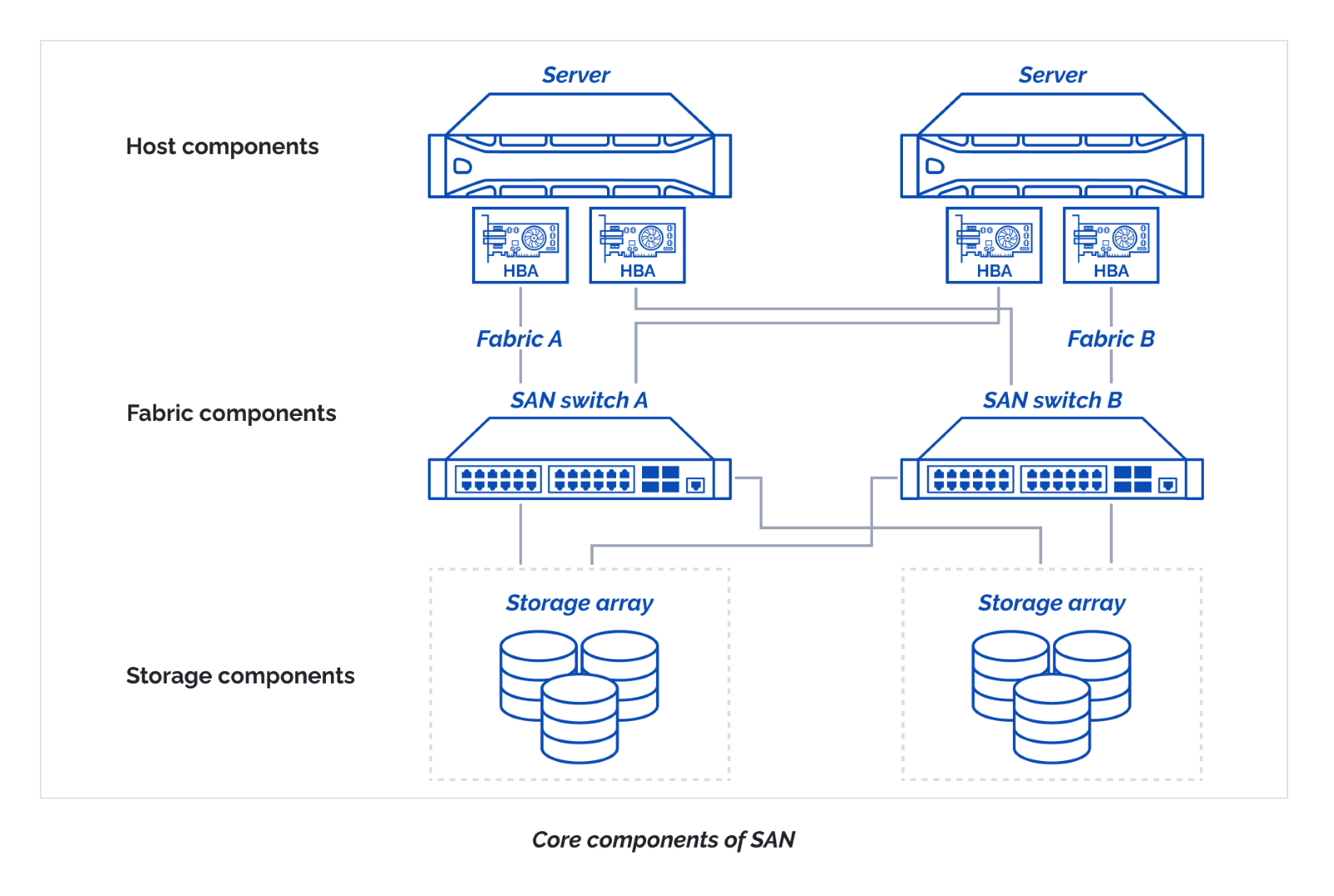
IP SAN Advancements
NVMe over Fabrics (NVMe-oF): NVMe-oF over TCP/IP is gaining traction, offering improved performance by enabling NVMe protocols over IP networks. This advancement could enhance the performance of IP SAN systems.
Software-Defined Storage (SDS): SDS solutions are leveraging IP SAN to provide flexible, scalable, and cost-effective storage options. This trend aligns with the broader movement towards software-defined data centres.
FC SAN Advancements
16GFC and 32GFC: The introduction of higher-speed Fibre Channel technologies, such as 16GFC and 32GFC, continues to push the boundaries of performance and throughput in FC SAN environments.
Fibre Channel over Ethernet (FCoE): FCoE enables the convergence of Fibre Channel and Ethernet networks, allowing FC SANs to operate over high-speed Ethernet infrastructure. This hybrid approach can offer the best of both worlds—high performance and reduced infrastructure costs.
Integrating with Cloud Data Centre VXLAN
To fully understand the integration of IP SAN and FC SAN within cloud data centres leveraging VXLAN, it’s essential to grasp how VXLAN operates:
VXLAN Overview
VXLAN (Virtual Extensible LAN) enables the creation of Layer 2 networks on top of Layer 3 infrastructure. It uses a 24-bit segment ID, allowing for the creation of up to 16 million unique VLANs, significantly more than the 4096 VLANs supported by traditional VLANs.
Benefits of VXLAN
Scalability: Supports large-scale virtualized environments with extensive segmentation capabilities.
Flexibility: Facilitates the dynamic movement of virtual machines and workloads across data centres without reconfiguring the underlying physical network.
Isolation: Provides network isolation, enhancing security and multi-tenancy in cloud environments.
Integration Scenarios
IP SAN with VXLAN: IP SAN can seamlessly operate within VXLAN environments, utilizing the extended segmentation capabilities to provide flexible and scalable storage solutions. This integration is particularly beneficial for hybrid cloud setups where storage resources need to be accessible across multiple data centres.
FC SAN with VXLAN: While FC SAN typically operates on dedicated Fibre Channel networks, it can still interface with VXLAN through gateway devices. These gateways connect Fibre Channel networks to Ethernet-based VXLAN environments, allowing for the integration of high-performance storage with virtualized network infrastructure.
All-Electric Data Centres: The Path Forward
The Importance of Sustainability
The drive towards all-electric data centres is fueled by the need for sustainability and reduced environmental impact. By relying on renewable energy sources and optimizing energy consumption, businesses can achieve greener IT operations.
Role of IP SAN and FC SAN
IP SAN: IP SAN’s ability to utilize energy-efficient Ethernet technologies makes it a strong candidate for all-electric data centres. By adopting practices such as Energy-Efficient Ethernet (EEE) and optimizing network infrastructure, businesses can reduce their power consumption and carbon footprint.
FC SAN: FC SAN can also contribute to sustainability goals. Modern Fibre Channel technologies are designed with energy efficiency in mind, providing high performance with lower power consumption. Implementing FC SAN in conjunction with energy-efficient practices can enhance the overall sustainability of data centre operations.
In the context of modern cloud data centres and the shift towards all-electric data centres, both IP SAN and FC SAN play vital roles. IP SAN’s compatibility with VXLAN and its energy-efficient potential make it a strong contender for sustainable IT infrastructure. Meanwhile, FC SAN’s performance benefits and ongoing advancements in energy efficiency ensure its continued relevance in high-demand environments.
Ultimately, the choice between IP SAN and FC SAN will depend on a thorough assessment of your business’s specific requirements, budget constraints, and long-term strategic objectives. By understanding the strengths and limitations of each technology, you can make an informed decision that optimizes your storage networking solution for the future.

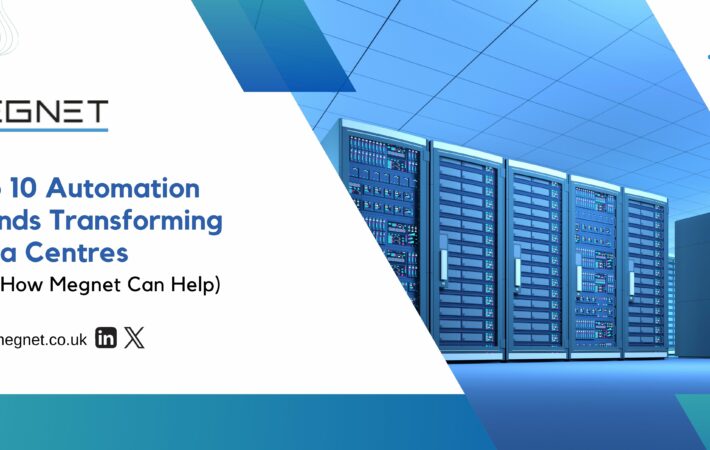
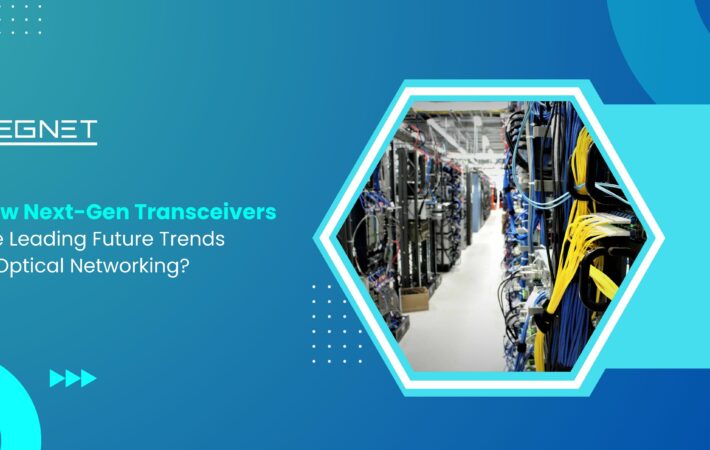
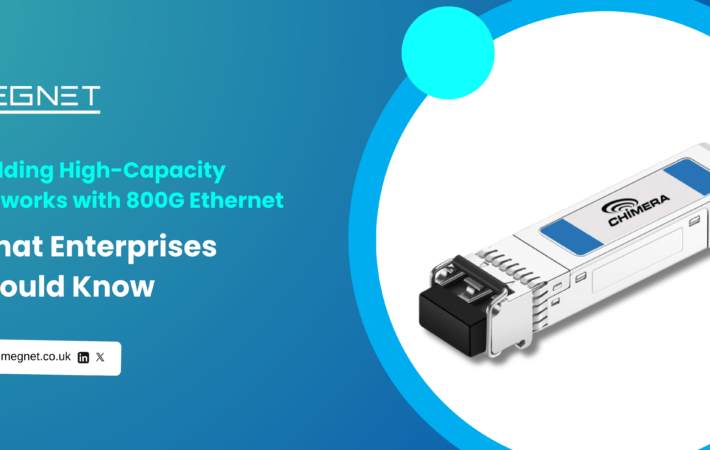
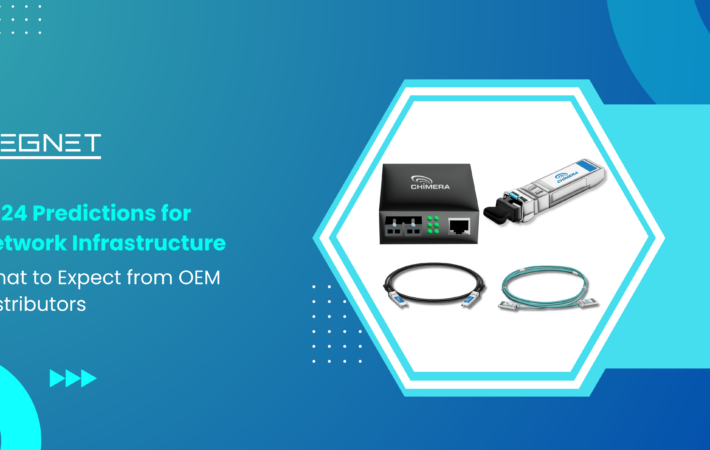
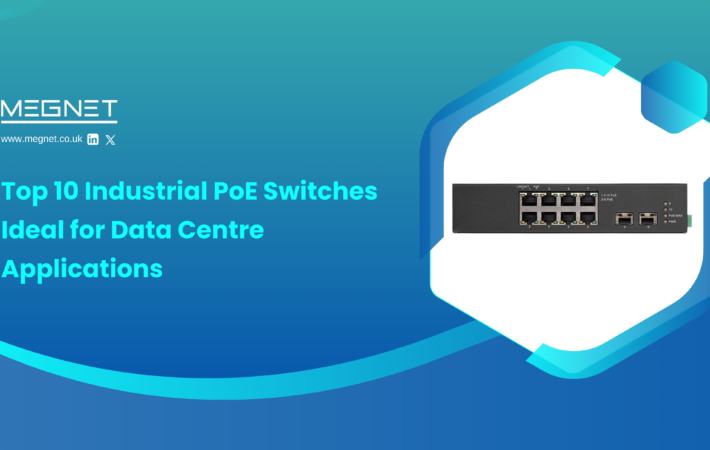


Leave a comment
Your email address will not be published. Required fields are marked *